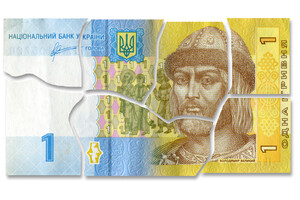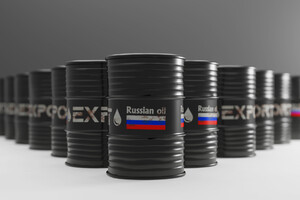How to plan a counteroffensive against the Russian Federation on the "fuel" flank

With the beginning of Russia's military aggression, fuel supply routes to Ukraine changed radically. However, it is not possible to stop the supply of Russian fuel. It was not possible to do this even after the decision adopted in May by the government of Ukraine, which prohibited the import of fuel of Russian origin and strengthened the requirements for documents on the origin of the fuel. Of course, this had some effect, but currently there is every reason to believe that the Russian partners have learned to overcome this requirement as well. It seems that Ukraine is approaching the need to solve a fundamental question: should we buy fuel from those who cooperate with the aggressor?
The ban on the import of Russian fuel was implemented by the improvement of Resolution No. 1147 "On the ban on the import of goods originating from the Russian Federation into the customs territory of Ukraine", which entered into force on May 20, 2023.
What usually lasts a week or two stretched for five months: initiation, approval in the ministries, submission to the government meeting, signing... During this time, disappointing transformations took place in the market of petroleum products, especially liquefied gas. The open border, huge volumes of cheap gas of unknown origin (that is, it can be assumed that it is Russian) in the Baltics and Poland and the low moral barrier of importers led to the fact that the supply of gas from transparent sources almost stopped. According to the results of March 2023, the share of gas of suspicious, unclear origin exceeded 80% of imported volumes.
Show the document!
To see how the gas supply ban affected the market landscape, we compared supplies over the 20 days in May, before the restrictions were in place, with the 20 days in June (see figure), when the border was closed to fuel of Russian and unspecified origin.
According to customs statistics, the changes affected Poland the most. Geographically, imports from Poland remained at the same level, but Polish gas itself became quite scarce. We will remember this later.
Suppliers from Latvia, a country that imports 90% of liquefied gas from the Russian Federation, have almost completely left the Ukrainian market. According to traders, the volume that Ukrainian buyers used to buy in Latvia went to Poland. At the same time, the amount of gas with a Euro certificate (form EUR1) has significantly increased in statistics. This document indicates that the batch contains at least 51% of the component produced in the European Union.
Kazakhstan remains the largest supplier. In the summer, up to a third of gas is supplied to Ukraine with a Kazakh certificate.
And the impression is that the picture looks cool: Kazakhstan, Europe, the USA and no Russians. However, a deeper analysis shows that the Russian gas is still here, with us in this room.
First – Poland and parties arriving from there with a Euro certificate. Many shipments are still made from storage facilities that are powered only by Russian gas or receive it in significant quantities. Unfortunately, our ally remains the largest buyer of Russian LPG in the world. This is worth remembering.
Then – Baltic. Volumes from Latvia one way or another remain on the market, and resources from Lithuania continue to arrive (except for the local Orlen plant). All of them claim that the basis is gas from the Lithuanian refinery Orlen Lietuva, but there are serious doubts that the company sells so much liquefied gas to the free market. Well, the logistics look quite strange: to take it from Lithuania to Latvia, and then to send it to Ukraine. Orlen could clarify the situation, but representatives of this oil refinery traditionally do not comment on any issues. (Maybe because this plant itself also buys a lot of Russian gas on the domestic Polish market?)
Finally, the most interesting thing is Kazakhstan. Only a small part of "Kazakh" propane-butane actually goes from Kazakhstan (mostly by sea), but the main part comes from Russia. Namely, from Orenburg. A joint Russian-Kazakh company operates there, which processes Kazakh raw materials at the Russian Gazprom plant. That is, the product, which has never been in Kazakhstan, leaves the Russian office in Russian wagons, but with Kazakh documents.
According to our calculations, the share of gas of dubious and unclear origin in imports in June compared to May significantly decreased and is 25–30%. In July (at the time of writing there was no data for an adequate comparison), the percentage was even lower, and supplies from transparent sources showed growth. Yes, the dynamics of the relatively critical March are not bad, but there are nuances.
First, in the critical month of March, imports were reduced to a minimum, so the share of suspicious resources became even larger.
Secondly, in April-May, Russian gas significantly lost its attractiveness. For reasons understood only by the Russians, the price of their gas in Poland began to rise little by little, while in the Mediterranean and North Seas it fell noticeably. That is, Ukrainian companies began to transport gas of suspicious origin less only because of its price increase, and not for ethical reasons. That is why we should expect an increase in supplies of suspicious LPG as soon as the price situation changes. And this can happen already in September.
Certificates do not save from the Russian Federation
Even in the process of finalizing Resolution No. 1147, we noted that only the requirement of a fuel origin certificate would not be enough. Unfortunately, that's what happened. The market began to look not so much for an alternative non-Russian product as for the required certificate. As it turned out, the system of certification of origin in many countries is extremely imperfect.
There are plenty of examples, including Poland. In May, the country introduced an innovation for LPG exporters to indicate the country of origin. The volume of imports from the country in the reporting periods does not differ much, but the structure of origin does. More than 12,000 tons of gas with a Polish certificate arrived from Poland in 20 days of May, and only 1,700 tons in the same period of June. Thus, it turns out that the certificates that satisfied the Polish customs officials in May already aroused the suspicion of Ukrainian customs officials in June.
"I can't say that you can easily issue something as much as you want and whatever you want," is how a local trader describes his vision of the origin certification system in Lithuania. — But, let's put it this way, the control of these documents (which are submitted to issue a certificate. — Author) is not ideal."
Traders from Poland say almost the same thing. "How does the USA issue a certificate for a batch that is sent from a base where that gas never went?!" – asks our interlocutor off the record. He also emphasizes that prices on the market have hardly reacted to Ukrainian innovations, because almost nothing has changed for suppliers.
Or here is an interesting statistic: 14.4 thousand tons left Orenburg for Europe in June, which is equal to the volume of gas imports of Kazakh origin to Ukraine through the western border in the first 20 days of June... As for what kind of fuel was supplied with Kazakh certificates in the third decade of the month, one can only guess.
A customs employee told about another vivid case (with diesel fuel, however). Attention was drawn to the certificate of the Romanian Chamber of Commerce and Industry for a batch of Indian diesel fuel. That is, the certificate was issued in the country of transshipment of the product, not of production. Among the original documents, on the basis of which the certificate was issued, there is a set of certificates of quality and other unconvincing documents, which Ukrainian importers abundantly provided to the Energy Customs Service of Ukraine until May. A source in a large company from Bucharest confirmed that this is an absolutely normal practice for Romania, from which a huge amount of oil products comes to Ukraine.
Thus, the declarative nature of the definition of the country of origin was preserved, only the point of its fixation shifted to another country.
A fence should be built
Does this mean that the long-suffering resolution should not have been adopted? Of course not. It is the foundation for building a fence against fuel from the Russian Federation.
The National Security and Defense Council of Ukraine has already joined the case. The department has created a special working group to combat the flow of fuel of questionable origin. Based on the analytical data of the Energy Customs Service of Ukraine, the representatives of the Security Service of Ukraine (SBU), the Foreign Intelligence Service and other structures, the National Security and Defense Council of Ukraine (NSDC) has already issued recommendations for tighter control of imported petroleum products.
The wave of importers' dissatisfaction with the implementation of the National Security and Defense Council of Ukraine (NSDC) recommendations was expected, which cannot be said about the team from which this team left. In particular, the "Ukrainian Liquefied Gas Association", which fought so hard for a ban on the import of Russian fuel, expressed its attitude to this situation. Workers of the energy and oil refining industry write in a letter to the Energy Customs Service of Ukraine that additional inspections, they say, delay import shipments and that the certificate of origin is a document that "unequivocally indicates the country of origin." Unexpectedly, this is heard from market professionals who, in particular, know exactly the above history of "Kazakh" gas. And it is the in-depth inspection of transport documents that will show that it is in fact gas from the Russian Federation. An anecdote about underpants and a cross is mentioned.
The representatives of the Energy Customs Service of Ukraine have already initiated changes to the Customs Code of Ukraine. It is planned to provide more powers in requesting documents confirming the supply route from the manufacturer to the border. In addition, for consignments with a certificate issued in the country of export (as in the mentioned case with Romania), it is proposed to introduce a requirement to provide information on the certificate of origin from the country of primary origin.
The representatives of the Security Service of Ukraine (SBU) and the National Agency on Corruption Prevention (NACP) officials have their own ideas regarding the detection of fuel, potentially of Russian origin, and the punishment of the guilty. People's deputies are increasingly interested in the "sanction" topic.
***
The history of the fight against Russian fuel in Ukraine is quite revealing. After all, similar challenges are facing the West. Over time, the Russians and their partners adapt to the sanctions and find new ways to supply their fuel. We already have to ask ourselves: what to do with imports from Turkey, India, Saudi Arabia, the United Arab Emirates, Egypt, Hungary, etc., which are reliable partners of Russian oil companies? They work fully in accordance with the sanctions, they do not violate anything, but can this fact satisfy us, the victims of Russian aggression?
Ukraine has already become the driver of groundbreaking transformations in the energy market of the planet, radically changing the global flows of oil, oil products, coal and natural gas. We must also be an example to the world in implementing tough barriers to "bloody" fuel.
Read this article in russian and Ukrainian.
Please select it with the mouse and press Ctrl+Enter or Submit a bug

















 Login with Google
Login with Google